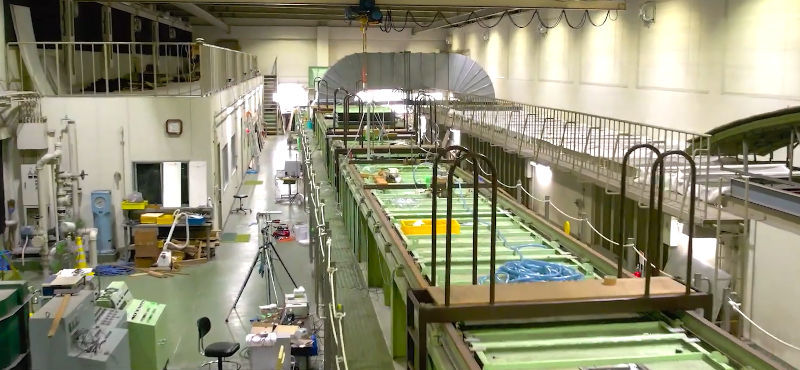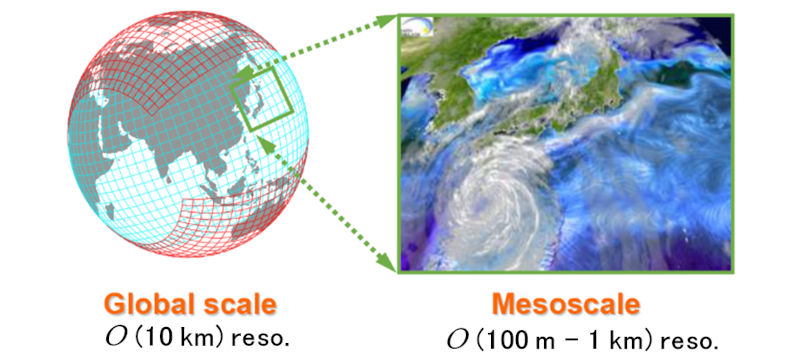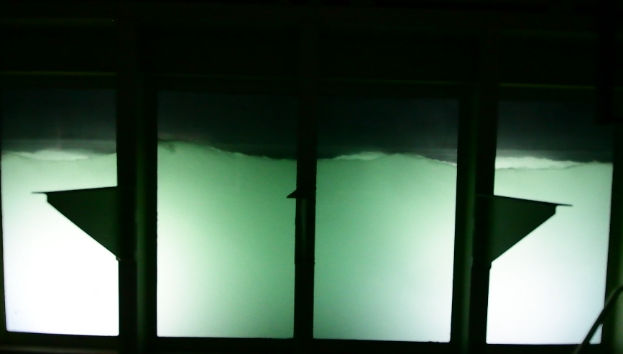Progress Report
Estimation and Control of Air-Sea Momentum and Heat Fluxes of Typhoons[1] Modelling of drag and heat coefficients and possibility of typhoon control by changes of sea surface flux
Progress until FY2024
1. Outline of the project
The accuracy of typhoon track prediction has improved in recent years, whereas that of typhoon intensities prediction has not been improved yet. One of the main reasons is the difficulty of representing momentum and heat transfer mechanisms across the sea surface in typhoons. Momentum and heat transfer across the sea surface, which substantially influences intensities of typhoons, has not been well modeled.

The goal of this project is to develop accurate models for predicting the heat and momentum fluxes across the air-water surface under high wind-speed conditions similar to typhoons, using the world's largest typhoon simulation tank (Fig. 1), and to clarify possibility of typhoon control (weakening) numerically by using MSSG (Multi-Scale Simulator for the Geoenvironment) model (Fig. 2).

2. Outcome so far
①Experiment on changing the water surface condition
We conducted some experiments by introducing surfactant into the tank and measuring wave heights under high wind speed conditions (Fig. 3). Our result suggested that energy transport at the air-water interface was altered. Additionally, we confirmed even lower surfactant concentrations than previously used could achieve similar effects.

②Numerical simulation of typhoons using the proposed flux models
Using the proposed new empirical formula, we conducted sensitivity experiments to assess the effects of surfactant intervention on typhoon. Our results showed that surfactants have little impact on the typhoon's path (Fig. 4) and an increase in typhoon intensity during periods when the typhoon center went through the intervention area. Evaluations of the size of the intervention area indicated that narrower intervention weakened effectiveness. On the other hand, further detailed investigation showed that the intervention effect of the surfactant depended on the size of the high wind speed zone affected by the intervention.

3. Future plans
Our project has shown that intervention in high wind speed areas can have a significant impact on typhoons. However, it has been suggested that using surfactants for flux control would require an impractically large amount of input, and the environmental impact cannot be ignored. We would like to explore alternative intervention methods that differ from surfactants in the future.